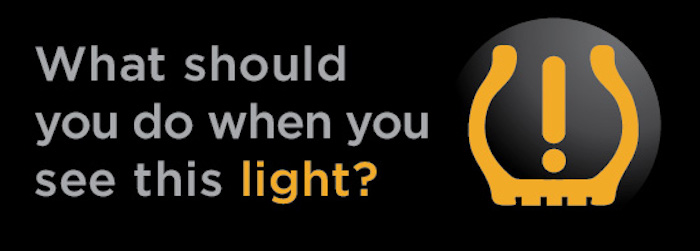WHAT DOES TPMS STAND FOR?
A tire-pressure monitoring system (TPMS) monitors the air pressure inside the pneumatic tires on vehicles. A TPMS reports real-time tire-pressure information to the driver, using either a gauge, a pictogram display, or a simple low-pressure warning light. TPMS can be divided into two different types – direct (dTPMS) and indirect (iTPMS).
Indirect TPMS: Indirect TPMS measure air pressure with software-based systems rather than physical sensors. While the software may leverage existing vehicle sensors—like wheel speed sensors or accelerometers—indirect TPMS monitors air pressure via the antilock braking system (ABS). The ABS provides tire pressure information by measuring the difference in the diameter of each tire.
Direct TPMS: Direct TPMS measures tire pressure using waterproof hardware sensors located in each tire (or on the valve stem). Each wheel includes a battery-driven pressure sensor which transfers pressure information to a central control unit. This unit then reports high or low tire pressure and temperature data to the vehicle’s information system. Some sensors are mounted on the valve stem, other sensors are located in the wheel hub.
TPMS are installed either when the vehicle is made or after the vehicle is put to use. The goal of a TPMS is avoiding traffic accidents, poor fuel economy, and increased tire wear due to under-inflated tires through early recognition of a hazardous state of the tires.
According to Bridgestone Tires “Both overinflation and underinflation can cause premature treadwear and possible tire failure. Overinflation can result in decreased traction, premature wear, and the inability to absorb road impact. Overinflated tires will show premature wear in the center of the tread. On the other hand, underinflation will cause sluggish tire response, decreased fuel economy, excessive heat buildup, and tire overload. An underinflated tire will show premature wear on both sides of the tread edges or “shoulders”.
If you’re learning about tire pressure sensors for the first time, finding the TPMS indicator on your dashboard is simple. It’s a horseshoe-shaped light with an exclamation point in the center.”

IS IT OK TO DRIVE WITH MY TIRE PRESSURE MONITOR LIGHT ON?
NO! If the tire pressure monitor light is on, you should check your tire pressure as soon as possible. Be sure that when you pull over, its to a safe place! Low tire pressure creates a serious hazard on the road. When tire pressure is low, the tire has more contact with the road. This may cause the tire to overheat, leading to tread separation, excessive tire wear, or a blowout.
According to the National Highway Traffic Safety Administration, 738 people died in tire-related crashes in 2017.
DOES A TPMS REPLACE REGULAR TIRE PRESSURE CHECKS?
No! Understanding what a TPMS warning light means and what to do when it lights up is an important part of a driver’s responsibility. But it shouldn’t be a replacement for regular tire pressure checks. Why? Depending on the situation, the TPMS may have limitations such as:
• The TPMS warning light may be set to illuminate below the tire pressure needed to carry the load in the vehicle.
• The sensor(s) may not be accurately transmitting tire pressure data to the on-board computer.
• The system may not be able to accurately determine if a tire is too low if other tires are losing pressure at the same rate.
Therefore, even with TPMS, you should check tire pressure once a month, and before a long trip or when carrying extra load
SYMPTOMS OF A BAD TIRE PRESSURE SENSOR
The “TPMS Warning Light” Light Is on -- This light can indicate a variety of different issues, so it’s always best to have it checked out as soon as possible.
Handling/Steering Feels Off -- If you notice that your car is handling it differently than usual, it could be another symptom of a bad tire pressure sensor. This is because the sensor is responsible for sending information to the car’s computer about the pressure in the tires. If the sensor is not working correctly, the computer may not have the correct information, which can lead to strange handling.
Your Tires Are Losing Air -- If you notice that your tires seem to be losing air more quickly than usual, it could be a sign that the tire pressure sensor is not working properly. This could be due to a leak in the system or a faulty sensor. If you do not have a fast leak or a completely flat tire, carefully drive your vehicle to the nearest filling station or tire repair facility. NOTE: Do not drive on a flat tire.

When new sensors are installed, the system must relearn the location of each tire, which requires a detailed series of technical procedures. You should leave this task to a professional. If you need tire service for your vehicle, come to Hillside Auto Repair for prompt and professional service. Our highly-trained technicians are equipped to assist you with any of your automotive needs. After all, We’re the Professionals You Can Trust.